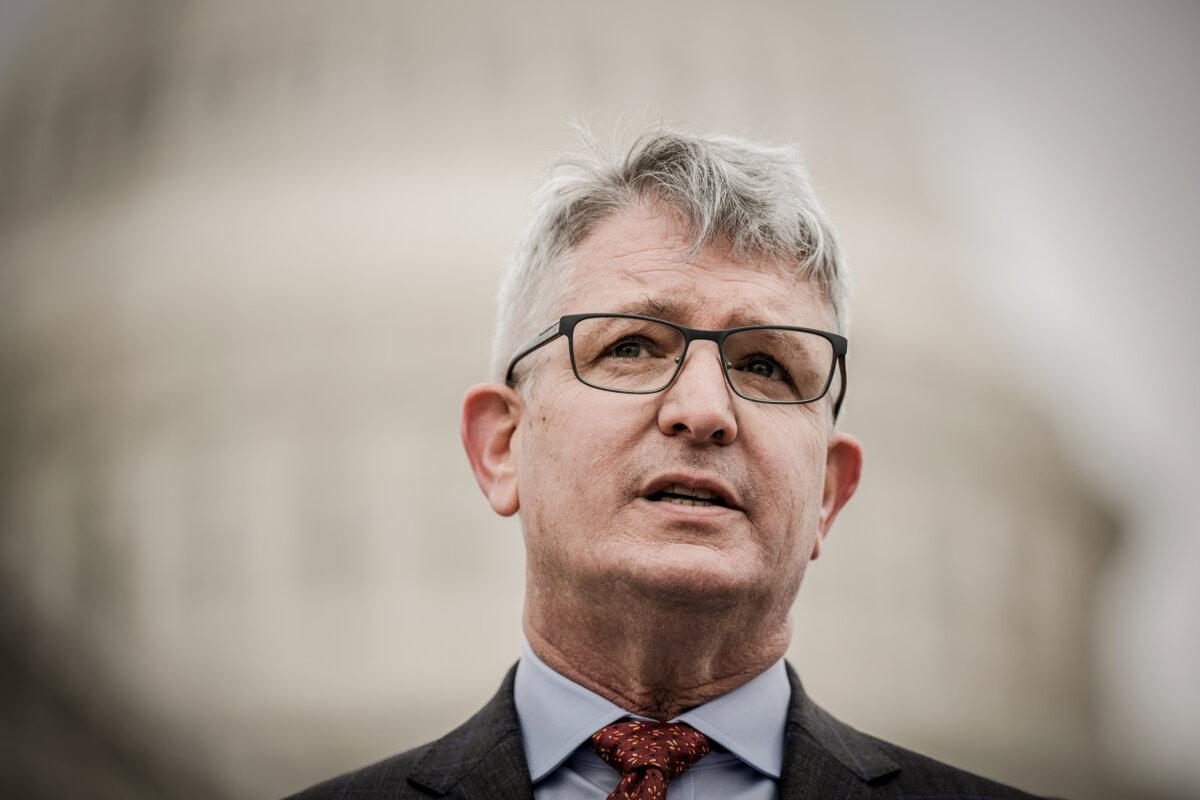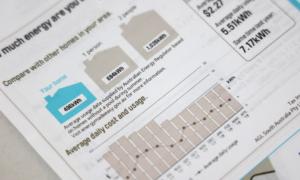House panel critics dispute DOE officials’ claims that ‘historic investments’ in renewable energies are lowering their constituents’ monthly power bills.
The Biden administration’s investments in renewable energy will translate into a $38 billion decline in electricity costs for consumers within a decade, savings that consumers are “already starting to see,” U.S. Department of Energy (DOE) Deputy Secretary David Turk told the House Committee on Science, Space, and Technology on June 26.
However, the DOE’s Energy Information Administration projected in May that the average consumer will pay 16.23 cents per kilowatt-hour (kWh) in 2025, the highest electricity rate level in three decades.
Critics questioned whether consumers are seeing savings, citing the Bureau of Labor Statistics’ annual March report documenting how U.S. electricity prices rose by 3.6 percent over the previous 12 months, outpacing the nation’s overall inflation rate of 3.2 percent.
“I feel like we’re getting a timeshare brief when you’re making assertions that you’ve saved Americans money on energy costs,” Rep. Mike Garcia (R-Calif.) told Mr. Turk.
Rep. Brandon Williams (R-N.Y.) noted that the projected savings come after the administration’s investments drive capital improvement and transmission costs so high that any pause in rising rates will seem like “savings.”
“That’s when the price drops? After the historic increase?” he asked. “It’s a little disingenuous.”
The disconnect between the administration’s ambitious transition from fossil fuels to renewable energies to reach its goals for a carbon-free electric grid by 2035 and a carbon-free economy by 2050, and the costs imposed on consumers as utilities retool to meet a projected tripling in power demand by 2040, was among many issues discussed during a three-hour hearing that paused for 35 minutes so members could vote on the Department of Homeland Security’s proposed fiscal year 2025 budget.
The House Science, Space, and Technology Committee’s purview spans nearly $18 billion in research, development, and commercial programs within the DOE’s proposed $51.42 billion fiscal 2025 spending plan, and more than $100 billion in multi-year allocations authorized under 2021’s Bipartisan Infrastructure Law and 2022’s CHIPS and Science and Inflation Reduction acts.
Under President Joe Biden’s 30 percent tax credit for “clean energy” development, nearly $650 billion in private capital has been invested in U.S.-based manufacturing, including $120 billion in battery factories and $35 billion in electric vehicle (EV) plants, creating more than 275,000 jobs in the past 18 months, Mr. Turk said.
With more than 600 projects advancing, the association reports that construction spending in manufacturing has nearly tripled since June 2020 and was up by 37 percent year over year in January 2024, when it reached a record high of $225 billion.
‘Bill Is Coming Due’
All of these savings seem to be manifesting in higher electricity bills, Mr. Williams told Mr. Turk, noting many of his constituents are bracing for double-digit rate hikes.
National Grid, an investor-owned utility with more than 20 million customers in New York and Massachusetts, submitted a proposed 15 percent rate increase for 1.7 million electricity customers and a 20 percent hike for 640,000 natural gas customers to the New York Public Service Commission in late May.

“Their proposal would add approximately $440 a year to the bill for a typical central New York household that is using both electricity and gas,” Mr. Williams said, claiming that the proposed rate hike “demonstrates the pressing need for America to reassess energy investment strategy. It’s clear that the bill is coming due for expensive and unrealistic progressive energy policies.”
Mr. Turk said the administration’s “focus on affordability“ is the keystone of its green energy push, although initial investments in infrastructure, grid expansions, and technology—upfront one-time costs—are just that, investments that will save consumers money in the long run.
“What we’re actually seeing is the historic investments we made in clean energy are actually having a decrease in prices across our country,” he said.
“Not in my district—they’re going to have to pay $440 more [for electricity],” Mr. Williams said. “As you’ve rolled out historical mandates for renewable energies, in New York state, I’m afraid the facts really do not match the talking points.”
“Happy to talk numbers and happy to talk facts,” Mr. Turk replied, acknowledging that “there may be parts of the country that are experiencing some [rate hikes] after the historic investments.”
He said factors other than the administration’s energy policies have contributed to energy inflation, including supply chain disruptions “because of COVID and when Russia invaded Ukraine” in February 2022.
Mr. Williams said blaming the COVID-19 pandemic for contributing to higher electricity costs in 2024–25 is “an answer you didn’t provide earlier. I only hear political answers, and that’s frustrating.”
“Again, you got to look at cause and effect,” Mr. Turk said. “Because of the president’s leadership, because of the congressional legislation, we’re going to have $38 billion across our country in savings for folks on electricity bills. We’re already starting to see that.”
That’s not what the “65-or-so-percent of Americans who live paycheck to paycheck” are seeing, Mr. Williams said.
What they are seeing, he said, is “the cost of expensive renewable projects, canceled gas pipelines, and prematurely-closed nuclear power plants in New York state, on the back of the electrification mandates, are failing average Americans.”
Original News Source Link – Epoch Times
Running For Office? Conservative Campaign Consulting – Election Day Strategies!


